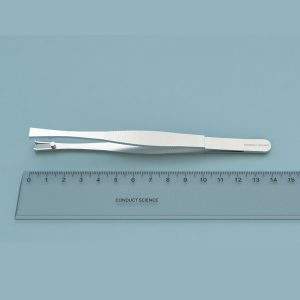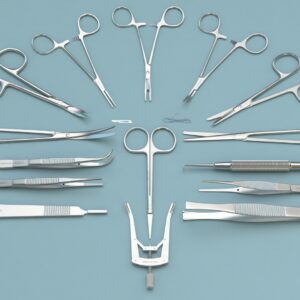$1,990.00
The three-chamber paradigm is a commonly employed method to assess spatial and non-spatial learning abilities and memory retention in zebrafish. The watertight apparatus designed by MazeEngineers features a distinctive dark panel that covers one side of each compartment, serving as a visual cue for facilitating right/left discrimination tasks.
Originally intended for studying learning and memory, this apparatus also finds utility in conducting diverse toxicity experiments and investigations involving behavioral responses to various stimuli.

MazeEngineers empowers preclinical neuroscience research with meticulously designed, customizable behavioral apparatuses. From manual classic mazes to fully automated smart systems, we provide the tools scientists need to capture high-quality, reproducible data for studies on learning, memory, anxiety, and depression.

bool(false)


Features |
Total Width: 22cm |
Total Length: 44cm |
Total Height: 30cm |
Middle chamber Width: 22cm |
Middle chamber Length: 18cm |
Door: Height: 12cm. Width: 10cm |
Choice Area: Width: 22cm. Length: 13cm |

Environmental enrichment plays a pivotal role in enhancing behavioral flexibility and cognitive function among captive animals. While extensively studied in terrestrial species (for more details, see [source]), its impact on fishes remains relatively unexplored. Understanding the effects of environmental enrichment on captive fish could significantly benefit efforts in population rehabilitation. This is crucial because fish raised in conventional hatcheries often exhibit lower survival rates compared to their wild counterparts, posing challenges for effective rehabilitation initiatives.
To assess the behavioral flexibility of fish, a flexibility test can be employed. This test utilizes a tank partitioned into two chambers, one of which contains a feeder. The partition features a single exit leading to the feeder chamber, which can be a simple hole in the divider or a more intricate tube route to the exit. This setup allows researchers to evaluate how fish navigate and adapt to different environmental conditions and stimuli.
The tanks utilized measure 90 x 45 x 30 cm in dimensions. Environmental enrichment strategies involve incorporating various elements such as fine-grain gravel, inverted black plastic pots (10 cm diameter) for shelter areas, plastic plants ranging from 12 to 30 cm in height, and introducing novel objects like differently colored plastic plants and grey PVC pipes (3 cm diameter).
To evaluate flexibility, two partition types are employed: one with a simple exit hole (5 cm wide) and another with a tube providing access to the exit hole. These setups enable researchers to assess how fish interact with and adapt to different environmental structures and challenges.
The experimental subjects should be housed in tanks where temperature and pH levels are rigorously controlled and maintained consistently. These stable conditions should be upheld throughout the duration of the experiments to ensure minimal stress and potential harm to the fish. Adequate aeration of the water and continuous monitoring to maintain water quality at optimal levels are equally critical aspects of their care.
Subjects are grouped into 4 groups. For a rearing phase of 12 weeks, provide the following set-ups for each group,
The experiments span four consecutive days. Begin by placing the test tank divider wall with an exit hole and an opaque partition blocking access to the feeder chamber. Transfer each fish individually into the tank and allow a settling period of 30 minutes. After this period, remove the opaque partition wall.
Each testing day involves positioning the exit in a different location. On days 1 and 2, use the divider wall with the exit hole positioned either on the left or right side, allowing 15 minutes for the fish to locate it. On days 3 and 4, utilize the divider wall with a tube providing access to the exit hole. One tube setup requires fish to swim down and up through the tube, while the other setup requires swimming down into the tube. Trials for these setups must be completed within 20 minutes.
Results indicated that the group receiving the highest level of enrichment, termed as the Full treatment group, consistently outperformed the other groups in the flexibility test. This suggests that environmental enrichment significantly enhances the adaptive capabilities of juvenile rainbow trout in response to changing conditions.
The initial design of the maze featured a rectangular shape (D. Arthur, E.D. Levin, 2001).
A more recent adaptation of the three-chamber maze, developed by Eddins et al. in 2009, focuses on investigating the effects of nicotine on learning in zebrafish.
This updated apparatus comprises a semi-cylindrical pipe unit divided into three distinct chambers: the start chamber, the right choice chamber, and the left choice chamber. Plexiglas rods extend through both sides of the apparatus.
Rotatable plastic partitions on the inner side of the rods facilitate the subjects’ entry into different chambers. These circular partitions are vertically positioned and attached to approximately 13 cm long rails, allowing free movement from the central chamber to the end wall of the apparatus.
In contrast to the original version where a fishnet was used, this modified maze incorporates a plastic beaker dropped just above the start chamber as a threatening stimulus to provoke behavioral responses from the subjects.
The following data are observed in the flexibility test.
Environmental enrichment significantly contributes to the success of hatchery-raised fishes in rehabilitation programs aimed at population recovery. Research indicates that both the duration and recency of exposure to enriched environments influence the behavioral flexibility and cognitive abilities of fish. The flexibility test serves as a straightforward method to evaluate these capacities.
This uncomplicated apparatus represents an efficient and indispensable tool for assessing the impacts of environmental enrichment on fish behavior and cognition.
The handling and rearing conditions significantly influence fish performance. Excessive stress and anxiety can lead to inaccurate results and observations. The presence of cues or other disturbances can also impact their performance adversely. Therefore, it is crucial to maintain consistent tank temperature and other environmental conditions throughout the testing process to minimize any unnecessary influences on their performance.
Bergendahl I.A, Salvanes A.G.V, Victoria A. Braithwaitec V.A (2015) Determining the effects of duration and recency of exposure to environmental enrichment. Appl. Anim. Behav. Sci. DOI: http://dx.doi.org/10.1016/j.applanim.2015.11.002
There are no questions yet. Be the first to ask a question about this product.